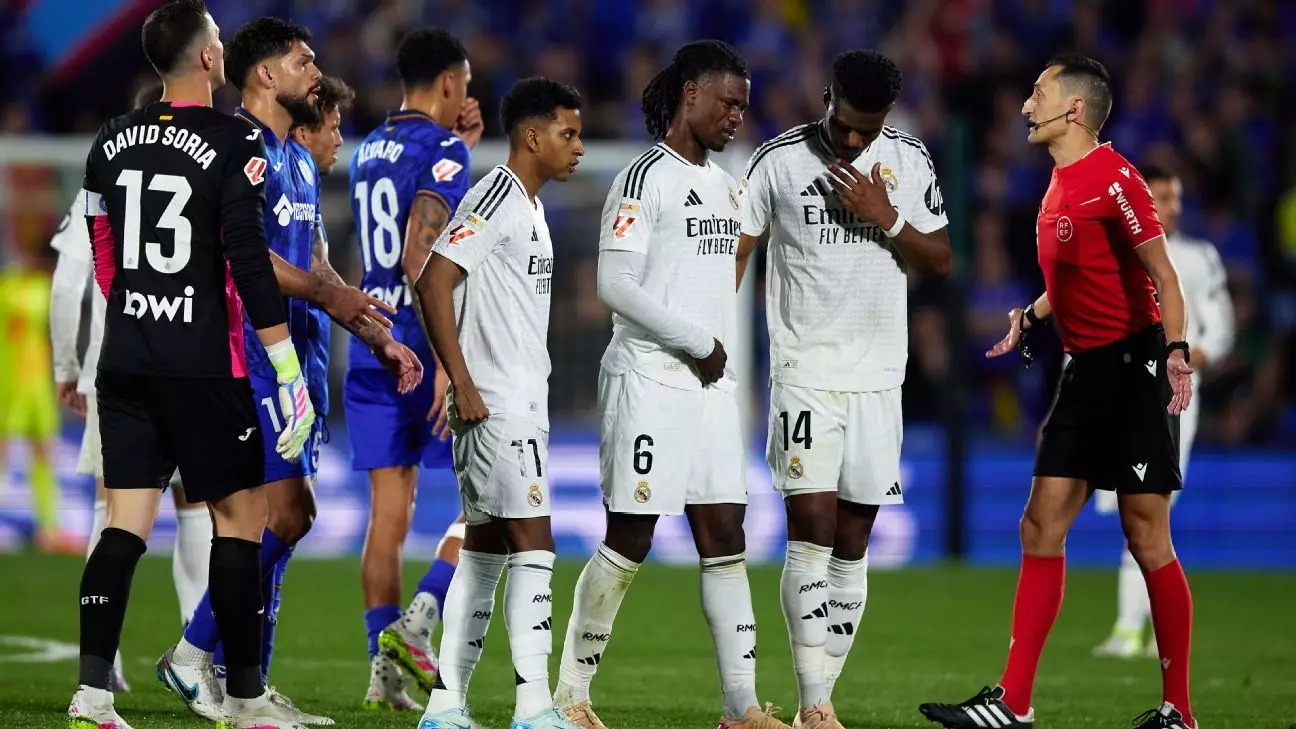Real Madrid is no stranger to adversity, yet as they prepare for the tantalizing Copa del Rey final against Barcelona, they face a substantial hurdle. Head coach Carlo Ancelotti announced that both David Alaba and Eduardo Camavinga are highly doubtful for Saturday’s crucial match due to injuries sustained during Wednesday’s narrow victory over Getafe. Alaba’s discomfort prompted an early exit, which was exacerbated when Camavinga himself succumbed to injury, forcing Real Madrid to finish the game with ten men. This situation underscores a pressing concern for Ancelotti: can the squad’s remaining depth and versatility compensate for these absences?
Alaba’s role as a seasoned defender is irreplaceable in a final where defensive solidity is paramount, while Camavinga’s versatility in midfield adds another layer of complexity to Ancelotti’s tactical plans. Fran García is now the solitary option available to fill the left-back position, putting immense pressure on a relatively inexperienced player in such a high-stakes environment.
Strategic Considerations: Coping with Limitations
Ancelotti’s acknowledgment that the recoveries of Alaba and Camavinga are unlikely before the weekend only highlights the fragility of a squad that recently faced disappointment with their elimination from the Champions League. In a league season where they trail Barcelona by four points, every match not only influences trophies but also team morale. Ancelotti’s perspective on the final, emphasizing that “anything can happen,” is a nod to the unpredictable nature of knockout football.
The absence of key players presents tactical dilemmas—particularly in crafting a balanced formation that can withstand the onslaught of a formidable Barcelona side. The Italian manager’s preparations must regard possible strategies that meld defensive resilience with the necessary creativity to challenge Barcelona’s backline.
Emerging Talents: Hope in Adversity
One silver lining amid the mounting pressures is the emergence of talents within the squad. Ancelotti’s praise for young midfielder Arda Güler, following his decisive strike against Getafe, paints a picture of hope. The manager envisions Güler’s long-term role in a more centralized position, recognizing his potential not only as a scorer but as a playmaker. Ancelotti’s insights into Güler’s skill set serve as an optimistic narrative for Real Madrid—one that can reinvigorate a club traditionally defined by its superstars.
Additionally, Güler’s evolution taps into the broader theme of youth development at Madrid, raising questions about the tactical shifts within the club. If Güler positions himself snugly within midfield dynamics, could Madrid’s style adapt to enhance overall performance, even in the absence of established names?
Atenuated Emotions: The Dark Side of Rivalry
Yet, the road ahead is not solely about tactics and player performances. The darkened corners of rivalries surfaced during the Getafe match when Dani Ceballos became a target of external vitriol. Such moments underline the intensity of competition and the emotional burdens athletes must navigate. The nature of football fans often draws lines between passion and hostility, raising the stakes for players who bear the weight of their club’s aspirations.
As Madrid gears up for the final, the narratives intertwining resilience, strategy, and potential underscore the complex tapestry of football—an arena where emotions run high, and every challenge metamorphoses into an opportunity for growth.

